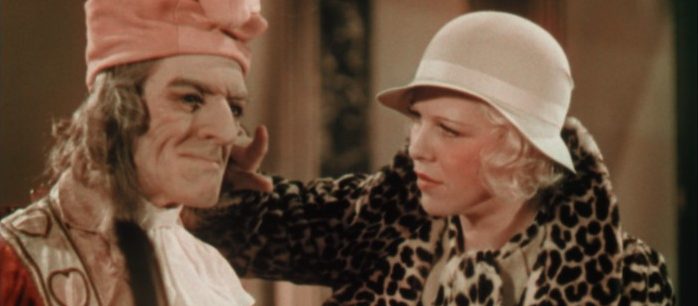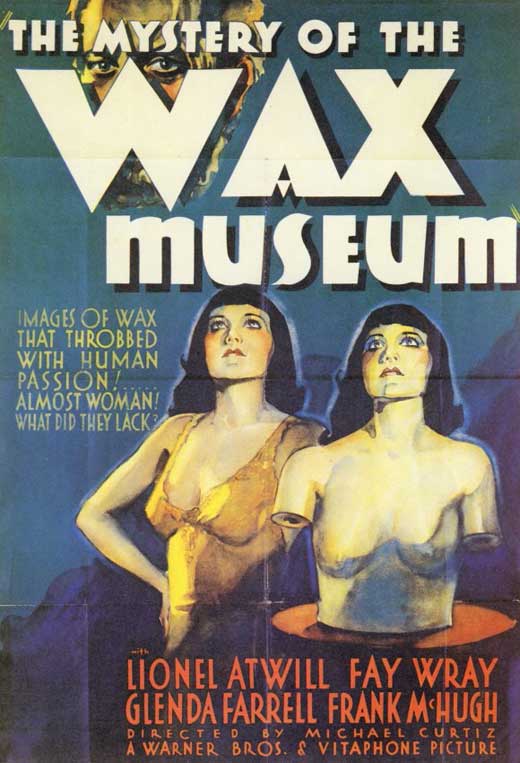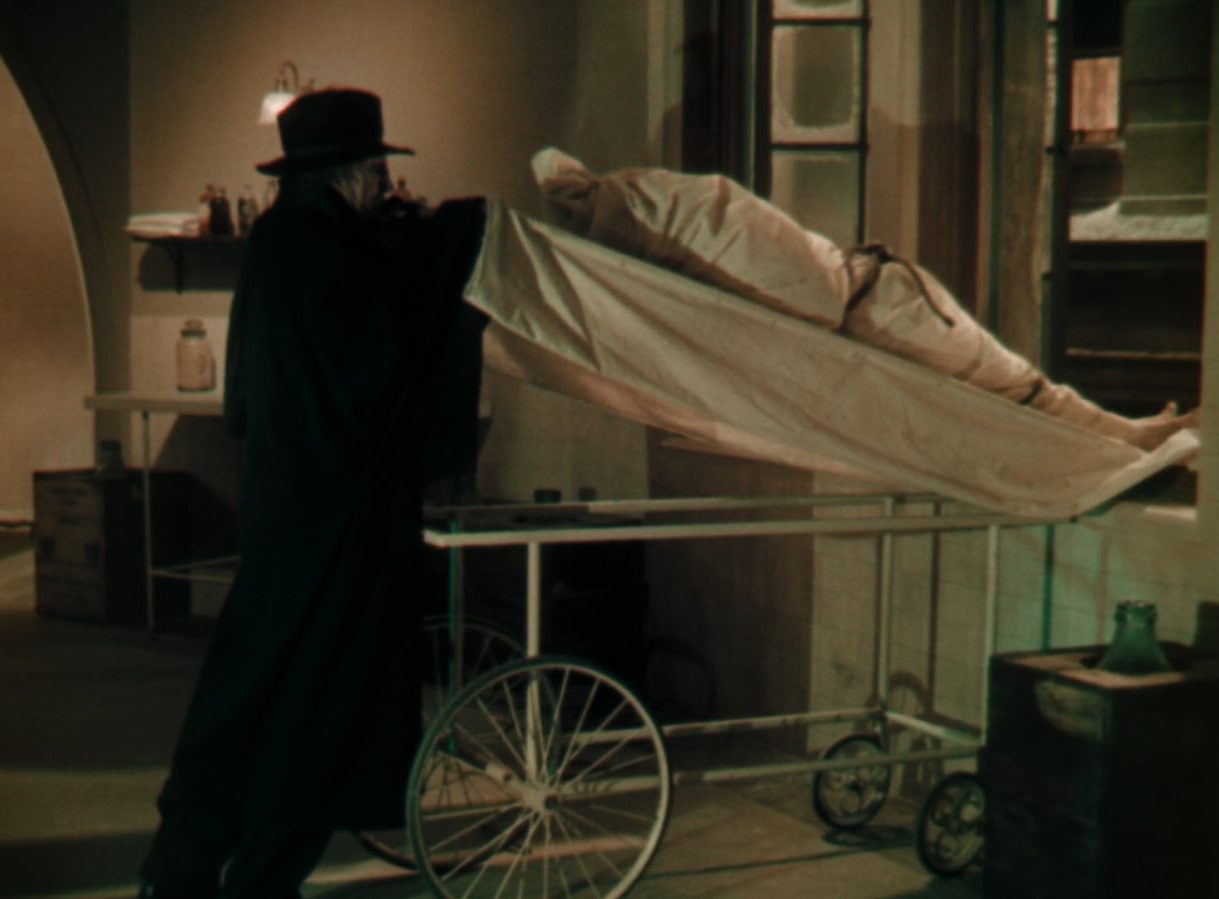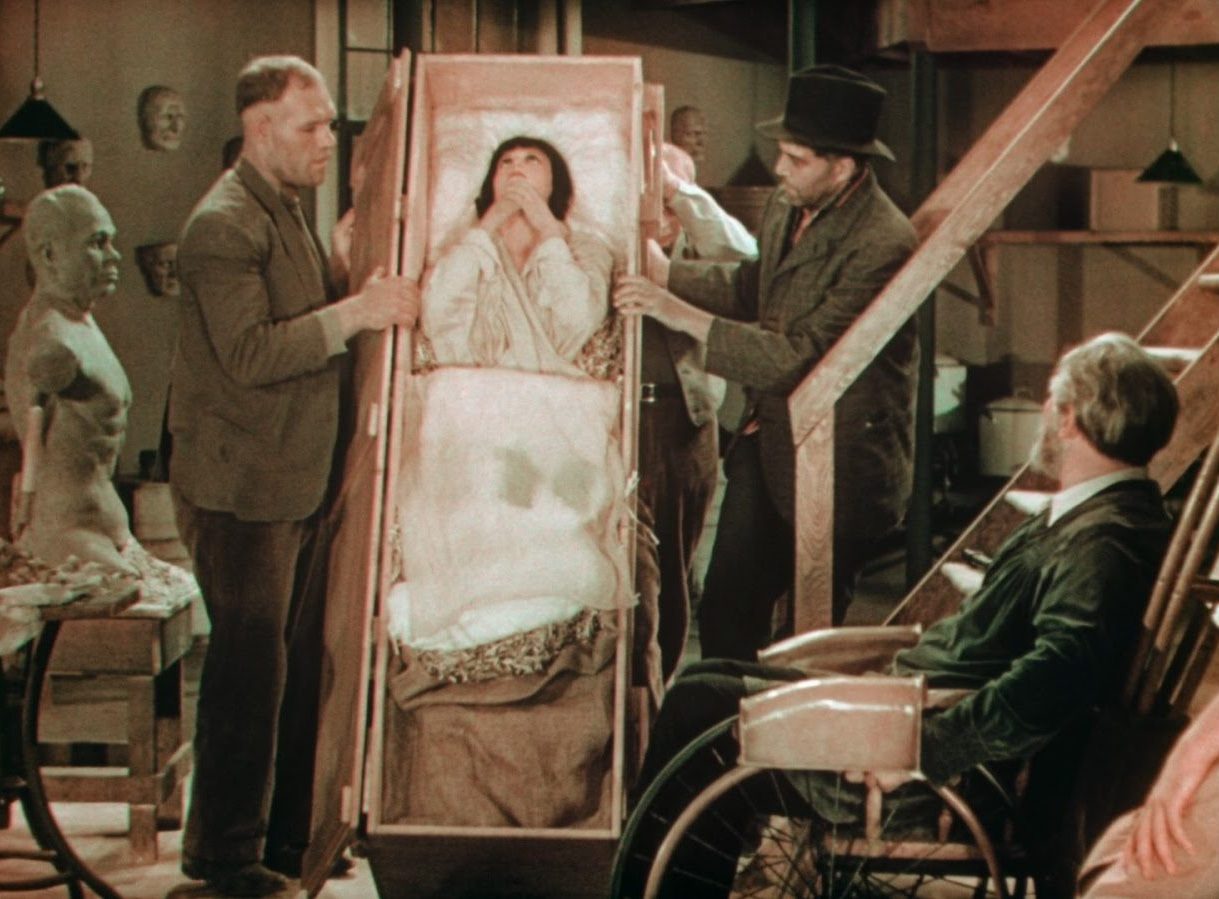

“My dear, why are you so pitifully afraid? Immortality has been the dream, the inspiration of mankind through the ages.”
In 1921, London-based sculptor and wax museum operator Ivan Igor (Lionel Atwill) sees his life’s work destroyed when his financial backer Joe Worth (Edwin Maxwell) sets the building ablaze in order to recoup his investment through an insurance payout. Worse yet, in his attempt to dissuade the arson, Igor mounts a physical defense of his creations that leaves him physically maimed by the fire, unable to walk or work with his hands.
He resurfaces twelve years later in New York City, now overseeing a small team that continues in his tradition of resurrecting historical figures like Joan of Arc and Voltaire. Florence Dempsey (Glenda Farrell), an investigative reporter always on the lookout for a scoop, soon makes a connection between the uncannily lifelike statues debuting at the museum and the growing list of bodies stolen from the local morgue. With the help of one of the primary suspects in the disappearances (Gavin Gordon), she investigates the wax museum and seeks to understand the wheelchair bound sculptor’s newfound fixation on her roommate (Fay Wray).

Employing the stylized shadows and distorted architecture of silent German horror films such as The Cabinet of Dr. Caligari and Nosferatu, and working from a decidedly creepy premise, Michael Curtiz’s The Mystery of the Wax Museum fits snugly into the Golden Age of Horror. A pre-Code film, it leans into its macabre and lurid elements—melting faces, heroin addicts, scantily clad women, corpse robbery, references to bootlegging and illicit sex—building to a telegraphed climax that is nevertheless quite shocking.

And yet it also holds up quite well as a snappy newspaper romcom alongside the likes of The Front Page and His Girl Friday, a dimension that might have been overlooked prior to its recent restoration which transformed it from a neglected film history curio into legitimate contemporary of enduring pre-Code horror pictures like Frankenstein and The Black Cat. In fact, it may be that modulation between sinister and silly that gives The Mystery at the Wax Museum its particular charm; that and its atmospheric two-color Technicolor palette.